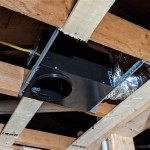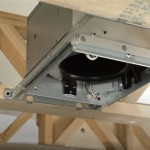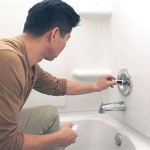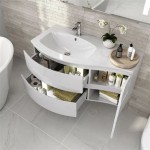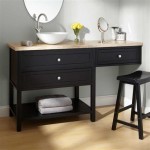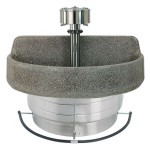What Size Are Bathroom Taps?
Understanding bathroom tap sizes is crucial for a successful bathroom renovation or new installation. Incorrectly sized taps can lead to plumbing issues, aesthetic imbalances, and overall dissatisfaction with the final result. This article explores the standard sizes and critical measurements needed to make informed decisions when choosing bathroom taps.
1. Understanding Tap Hole Configurations
Before delving into specific measurements, it's essential to determine the tap hole configuration of the basin or bath. This refers to the number and arrangement of holes drilled into the sanitaryware to accommodate the tap and other fixtures like separate hot and cold handles or a combined mixer tap. Common configurations include single-hole, center-set (two-handle taps with a fixed center distance), widespread (two-handle taps with adjustable center distance), and wall-mounted.
2. Standard Tap Hole Sizes
Most basin taps are designed to fit a standard tap hole diameter of 35mm. However, some designs, particularly those with integrated sensors or unique features, may require larger or smaller holes. It's always advisable to check the manufacturer's specifications for the specific tap model being considered.
For baths, the tap holes generally follow the same 35mm standard. However, bath fillers, especially those integrated with a shower diverter, might have different requirements. Again, consulting the manufacturer's instructions is crucial for accurate sizing.
3. Measuring Center-Set Taps
Center-set taps feature two handles, one for hot and one for cold water, mounted on a single base. The crucial measurement for these taps is the center distance, which is the distance between the centers of the two tap holes. The most common center-set distance is 4 inches (100mm). Other standard sizes include 6 inches (150mm) and 8 inches (200mm), although less frequent.
Accurate measurement is essential when replacing existing center-set taps to ensure the new fixture aligns correctly with the existing plumbing. Use a ruler or tape measure to determine the precise center distance before purchasing new taps.
4. Measuring Widespread Taps
Widespread taps also have separate hot and cold handles, but unlike center-set taps, the handles are independent and can be positioned at varying distances. This provides greater flexibility in design and allows for customization to suit different basin sizes and styles. Widespread taps typically come with flexible hoses or pipes that connect the handles to the water supply, enabling adjustable positioning.
When selecting widespread taps, consider the overall dimensions of the basin or bath. The handles should be positioned ergonomically for comfortable use and should not extend beyond the edges of the basin. The manufacturer’s specifications will provide details on the minimum and maximum spread distances permissible for a specific tap model.
5. Considering Spout Reach and Height
The spout reach, the horizontal distance from the base of the tap to the center of the water stream, is a crucial factor in preventing splashing and ensuring comfortable usage. A longer spout reach is generally preferred for larger basins to avoid water spilling over the edges. Conversely, a shorter spout reach might be more suitable for smaller basins.
Spout height, the vertical distance from the base of the tap to the aerator, also impacts functionality. A higher spout provides more clearance for handwashing and filling containers, while a lower spout might be more aesthetically pleasing for certain basin designs. Consider the depth and shape of the basin when choosing a tap with the appropriate spout height.
6. Importance of Matching Tap Size to Basin Size
Proportion is a key element of good bathroom design. A large, ornate tap on a small basin can look overwhelming, while a small, minimalist tap might appear lost on a larger, more elaborate basin. Ensure the scale of the tap is harmonious with the size and style of the basin for a cohesive and aesthetically balanced result.
Consider the overall style of the bathroom when selecting tap sizes. A contemporary bathroom might benefit from sleek, minimalist taps, while a traditional bathroom might be better suited to more ornate designs. The tap size should complement the overall design aesthetic.
7. Checking Water Pressure Requirements
While not directly related to physical dimensions, water pressure compatibility is a critical consideration when selecting bathroom taps. Some taps have specific water pressure requirements for optimal performance, while others are designed to function efficiently across a wider range of pressures. Check the manufacturer’s specifications to ensure the chosen tap is compatible with the water pressure in your home to avoid performance issues such as low flow rates or excessive splashing.

Understanding Bsp Sizes Tap Threads Notjusttaps Co

Guide To Bathroom Taps Fix

Are Bathroom Taps A Standard Size Victoriaplum Com

Bathroom Taps Buyers Guide Buyer Guides Heatandplumb Com

A Guide To The Diffe Type Of Tap Fittings Able Skills News

The Bathroom Taps Buyer S Guide Bigbathroom

A Guide To The Diffe Type Of Tap Fittings Able Skills News

Guide To Bathroom Taps Fix

Silver Crome Plated Brass Bathroom Water Taps Size 15 Mm

Bathroom Taps Guide B Q
Related Posts
